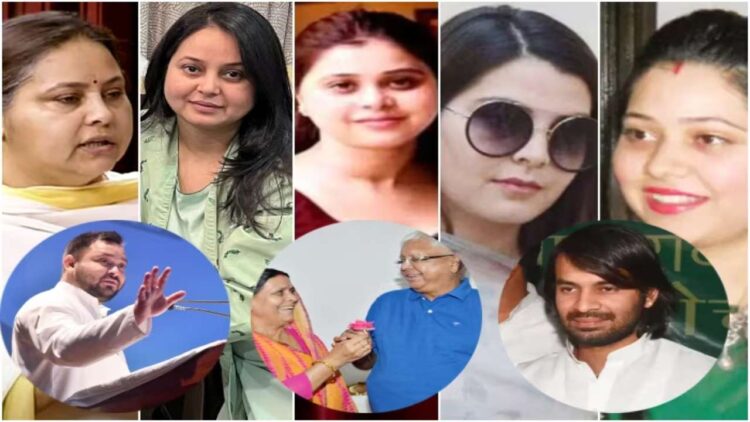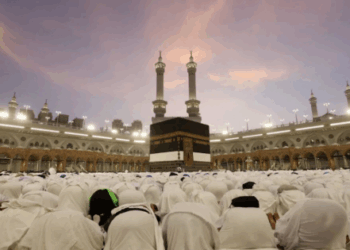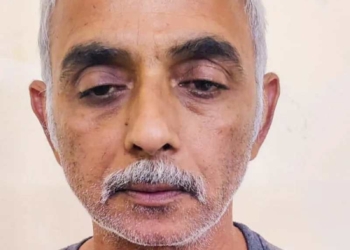Lalu Yadav History: When a sound arises from the soil of Bihar, it either rebellion or the knock of power. And if that voice is of ‘Lalu Prasad Yadav’, then understand that the politics of the country is going to take or taken Lalu Yadav often in the headlines and once again, because of the matter of removing his elder son from the party family, his name is in the headlines. Lalu Yadav is a name that became a character of humor, sometimes the face of caste politics, but always in power and roads. Lalu Yadav is not just one person, but a moving political institution, and his family … the empire of that institution spread. Today, when his son Tejashwi Yadav is establishing himself as a possible successor for the post of Chief Minister in Bihar politics, the question arises that how did Lalu become a huge political family? Where did Lalu’s journey start, and how every child his child knocked on his own style? This report draws a full blueprint of the same heritage.
From village to Gandhi Maidan: Lalu’s early life
Lalu Yadav was born on 11 June 1948 in a simple Yadav family in Phulwaria village of Gopalganj district of Bihar. His father was a farmer and the family was financially very simple. Lalu graduated in Political Science from Patna University and then LLB. His political journey started in student life itself. Playing an active role in the JP movement, he stabbed Bihar’s student politics. Lalu Yadav’s political stature was elevated when in 1977, at the age of just 29, he won the Lok Sabha elections from Chhapra and joined the youngest MPs in the country. After this, he never looked back. When he became the Chief Minister of Bihar in 1990, he made social justice and backward class politics the heartbeat of the state.
Rabri Devi: Travel from an illiterate housewife to Chief Minister
The life of Lalu Yadav’s wife Rabri Devi is one of the most unique stories of Indian politics. She was a traditional woman who never saw the threshold of school. But in 1997, when Lalu Yadav caught in the fodder scam and went to jail, he made Rabri the Chief Minister. This decision was shocking for the whole country. Rabri Devi, ignoring criticisms, took over the post of Chief Minister twice in a row and kept her husband’s political legacy. Gradually she came out of Lalu’s shadow and was established as a strong leader.
Tejashwi Yadav: Cricketer to Crown Prince
Tejashwi Yadav is the most discussed among the nine children of Lalu Yadav. Sometimes he took a dream of becoming a cricketer and then went to Delhi and then on IPL’s path. But returned to politics after failure. Tejashwi connected Lalu’s political style with new ways of new times. He coined himself as a mature leader with dialogue with young voters, using social media and a strict language style. Currently he is the Leader of Opposition in the Bihar Legislative Assembly and has also been the Deputy CM. Lalu Yadav himself has declared him his political successor. The biggest power of Tejashwi is that he is projecting himself as ‘Vikas Purush’ despite his father’s image.
Tej Pratap Yadav: Political ‘Love Guru’ or unbalanced warrior?
Tejapratap is Lalu’s elder son. He is also active in politics, but his personality is considered less mature and more emotional than Tejashwi. Sometimes he campaigned on the chariot disguised as Krishna, sometimes he challenges his own party leaders from the public platform. Their marriage was also in the media headlines. He was married to a girl from a political family named Aishwarya Rai, who later broke in a very controversial manner. Tej Pratap tries to take himself seriously in politics. But till now he has failed to get out of his younger brother’s shadow.
Mr. India: Story of Chandrika Rai and Aishwarya Rai
The scope of Lalu Yadav’s family is not limited to blood relations only. This family is also deeply connected in political relations. Aishwarya Rai, whom Tej Pratap was married, is the daughter of RJD’s old colleague Chandrika Rai. But after the marriage broke, both Chandrika Rai and Aishwarya turned against RJD. Went to JDU’s court. This marriage and divorce became the public face of the internal discord of the Lalu family and also damaged Tej Pratap’s image.
World of daughters: distance from simplicity, service and politics
Lalu Yadav has seven daughters, most of whom stay away from public life. However, Misa Bharti has been launched on the political stage. Misa became a doctor from Patna Medical College and became a Rajya Sabha MP for the first time in 2014. Later he also contested the Lok Sabha elections, but lost. She is considered to be closest to her father and has been more influential than Tejashwi at times. The rest of the daughters like Rohini Acharya, who now live in Singapore, sometimes are in discussion with their statements on Twitter. Recently, he donated his kidney to his father’s illness, which made the whole country emotional.
Royal but rooted: the truth of lifestyle
The lifestyle of the Lalu family is a strange contradiction. On the one hand, Rabri Devi still lives in the desi that in the government residence-with the smell of cow, cow dung, curd and soil. At the same time, new generations like Tejashwi and Misa are seen in urban lifestyle, foreign trips, expensive clothes and social media branding. Tejashwi has assets worth crores, a network of immovable properties from Patna to Delhi and Gopalganj is spread. Cases of corruption have been raised many times against Lalu and Rabri, but their social support is still strong.
Political empire or family party
Lalu Yadav himself said at one time “politics is in my blood, and now it also runs in the veins of my children.” The RJD has now become famous as a ‘family party’, where every major decision is within the family. Tejaswi is the leader, Rabri is a guide, Misa Strategist, and Tej Pratap ‘Factor’, but this is also a target for family power opposition parties. The BJP and JDU constantly accuse the Lalu family like ‘scams of scams’, ‘example of dynasty’ and ‘crime-protected politics’.
Lalu family – symbol of sabbat, struggle and sensation
Lalu Yadav’s family is a rare example in India’s politics, where a poor, backward class youth became the railway minister of the country, became the Chief Minister and then his children carried forward the same legacy – being political or controversial. The future of RJD is now on the shoulders of Lalu Yadav’s heirs. If Tejashwi can turn this legacy into the creation of a new Bihar, then this family can become not just a political saga, but the beginning of a new era of social justice. But one thing is certain whenever the election Ranbheri will ring in Bihar, Lalu Yadav and his family’s name will definitely resonate in the air… sometimes with reverence, sometimes with questions, but always with effect.










